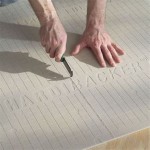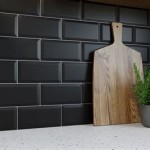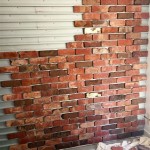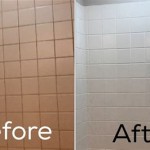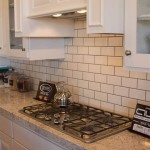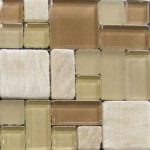How To Clean Toilet Tiles Easily
Toilet cleanliness is a crucial aspect of maintaining a healthy and hygienic home environment. Toilet tiles, in particular, are susceptible to staining, mildew growth, and the accumulation of mineral deposits due to frequent exposure to water and waste. Regular and effective cleaning is essential to preserve the appearance and sanitation of these surfaces. This article provides a comprehensive guide on how to clean toilet tiles easily and efficiently, outlining the necessary tools, cleaning agents, and step-by-step procedures.
Identifying Tile Types and Common Problems
Before commencing the cleaning process, it's important to identify the type of tile present in the toilet. Common types include ceramic, porcelain, and natural stone tiles. Each material possesses unique properties and may require specific cleaning approaches. Ceramic and porcelain tiles are generally more resistant to stains and chemicals, while natural stone tiles, such as marble or granite, may be more porous and require gentler cleaning solutions to prevent damage. Understanding the tile type will help determine the most appropriate cleaning methods and products.
In addition to identifying the tile type, recognizing common problems that plague toilet tiles is also important. These problems can include:
- Hard water stains: Mineral deposits from hard water can create unsightly white or chalky stains on the tile surface.
- Soap scum: Residue from soaps and shampoos can accumulate, forming a dull film that is difficult to remove.
- Mold and mildew: The warm, humid environment of a toilet provides ideal conditions for mold and mildew growth, particularly in grout lines.
- General grime and dirt: Everyday use can lead to the accumulation of dirt, dust, and other grime on the tile surface.
Addressing these issues effectively requires a combination of appropriate cleaning agents and techniques.
Essential Tools and Cleaning Agents
Having the right tools and cleaning agents is crucial for effective toilet tile cleaning. The following items are recommended:
- Spray bottle: For applying cleaning solutions evenly.
- Scrub brush: A stiff-bristled brush is necessary for scrubbing stubborn stains and grout lines.
- Microfiber cloths: For wiping surfaces clean and drying tiles.
- Squeegee: To remove excess water and prevent water spots on shower tiles.
- Gloves: To protect hands from harsh chemicals and bacteria.
- Eye protection: To prevent splashes of cleaning solutions from entering the eyes.
- Toilet bowl cleaner: For cleaning the toilet bowl itself.
- Tile cleaner: A commercially available tile cleaner or a homemade solution.
- Grout cleaner: Specifically designed to remove discoloration and stains from grout.
- Baking soda: A mild abrasive for scrubbing surfaces.
- White vinegar: An effective natural cleaner for removing hard water stains and soap scum.
- Hydrogen peroxide: A bleaching agent for removing mold and mildew.
- Bleach (optional): Use with extreme caution and proper ventilation for severe mold and mildew infestations.
When choosing cleaning agents, carefully consider the tile type and the severity of the stains. Always test cleaning solutions on an inconspicuous area of the tile before applying them to the entire surface to prevent damage or discoloration.
Step-by-Step Cleaning Procedure
The following steps outline a comprehensive procedure for cleaning toilet tiles effectively:
- Preparation: Remove all items from the toilet area, such as rugs, toiletries, and trash cans. This will provide clear access to the tiles. Open windows or turn on the exhaust fan to ensure adequate ventilation. Put on gloves and eye protection.
- Pre-Cleaning: Use a dry brush or vacuum cleaner to remove loose dirt, dust, and debris from the tile surface and grout lines. This will prevent the dirt from being spread around when cleaning with liquid solutions.
- Applying Cleaning Solution: Choose the appropriate cleaning solution based on the tile type and the problem being addressed.
- For general cleaning: Mix a mild all-purpose cleaner with warm water in a spray bottle. Spray the solution liberally onto the tiles.
- For hard water stains: Mix equal parts white vinegar and water in a spray bottle. Spray the solution onto the affected areas and let it sit for 10-15 minutes.
- For soap scum: Apply a commercial soap scum remover or a paste of baking soda and water to the affected areas.
- For mold and mildew: Mix equal parts hydrogen peroxide and water in a spray bottle. Spray the solution onto the affected areas and let it sit for 10-15 minutes. For stubborn mold, use a bleach solution (1 part bleach to 10 parts water) with extreme caution and proper ventilation.
- Scrubbing: Use a scrub brush to thoroughly scrub the tiles and grout lines. Pay particular attention to areas with stubborn stains or mold growth. For grout lines, use a grout brush or a toothbrush to reach into the narrow spaces.
- Rinsing: Rinse the tiles thoroughly with clean water. Use a sponge or a damp cloth to remove any remaining cleaning solution. Ensure that all cleaning residue is removed to prevent streaking or discoloration.
- Drying: Dry the tiles with a clean microfiber cloth. A squeegee can be used on shower tiles to remove excess water and prevent water spots.
- Grout Cleaning (if necessary): If the grout lines are heavily stained or discolored, use a dedicated grout cleaner. Apply the grout cleaner according to the manufacturer's instructions and scrub thoroughly with a grout brush. Rinse thoroughly with clean water and dry with a clean cloth.
- Polish (optional): For certain tile types, such as natural stone, a tile polish can be applied to enhance the shine and protect the surface. Follow the manufacturer's instructions for applying the polish.
- Final Touches: Replace all items that were removed from the toilet area. Dispose of used cleaning supplies properly.
Homemade Cleaning Solutions
While commercial tile cleaners are readily available, several effective homemade cleaning solutions can be used as alternatives. These solutions are often more environmentally friendly and cost-effective. Here are a few popular options:
- Vinegar and Water Solution: A mixture of equal parts white vinegar and water is an effective general-purpose cleaner for removing hard water stains, soap scum, and mildew.
- Baking Soda Paste: A paste made from baking soda and water can be used as a mild abrasive for scrubbing stubborn stains.
- Lemon Juice: Lemon juice is a natural disinfectant and can be used to remove stains and freshen the toilet. Apply lemon juice to the affected areas, let it sit for 10-15 minutes, and then scrub and rinse.
- Borax Solution: A solution of borax and water can be used to clean and disinfect toilet tiles. Borax is a natural mineral that is effective at removing mold and mildew.
When using homemade cleaning solutions, it is important to test them on an inconspicuous area of the tile first to ensure that they do not cause any damage or discoloration.
Preventative Measures
Preventing the build-up of dirt, stains, and mold is essential for maintaining clean toilet tiles. Implementing the following preventative measures can significantly reduce the frequency and intensity of cleaning required:
- Regular Cleaning: Wipe down the tiles with a damp cloth or sponge after each shower or bath to remove soap scum and water droplets.
- Proper Ventilation: Ensure adequate ventilation in the toilet by opening windows or using an exhaust fan. This will help to reduce humidity and prevent mold growth.
- Sealing Grout: Seal the grout lines with a grout sealer to prevent water and stains from penetrating. Reapply the sealer every 6-12 months.
- Using a Squeegee: Use a squeegee to remove excess water from shower tiles after each use. This will help to prevent water spots and soap scum build-up.
- Addressing Leaks Promptly: Repair any leaks promptly to prevent water damage and mold growth.
By incorporating these preventative measures into a regular cleaning routine, the toilet tiles can be kept clean and hygienic with minimal effort.
Dealing With Stubborn Stains
In some cases, toilet tiles may have stubborn stains that are difficult to remove with conventional cleaning methods. Here are some techniques for dealing with these types of stains:
- Ammonia: Use diluted ammonia (1 part ammonia to 10 parts water) to remove stubborn stains from ceramic and porcelain tiles. Ensure proper ventilation and avoid mixing ammonia with bleach, as this can create dangerous fumes.
- Commercial Stain Removers: Use commercial stain removers specifically designed for tile and grout. Follow the manufacturer's instructions carefully.
- Steam Cleaning: Use a steam cleaner to loosen and remove stubborn stains. The high-temperature steam can penetrate deep into the grout lines and break down dirt and grime.
- Professional Cleaning: If all other methods fail, consider hiring a professional cleaning service to clean the toilet tiles. Professional cleaners have the expertise and equipment to remove even the most stubborn stains.
When dealing with stubborn stains, always exercise caution and test cleaning solutions on an inconspicuous area of the tile before applying them to the entire surface.
Safety Precautions
When cleaning toilet tiles, it is essential to take certain safety precautions to protect oneself from harmful chemicals and bacteria. These precautions include:
- Wearing Gloves: Always wear gloves to protect hands from harsh chemicals and bacteria.
- Wearing Eye Protection: Wear eye protection to prevent splashes of cleaning solutions from entering the eyes.
- Ensuring Proper Ventilation: Ensure adequate ventilation by opening windows or using an exhaust fan.
- Avoiding Mixing Chemicals: Avoid mixing different cleaning chemicals, as this can create dangerous fumes.
- Storing Cleaning Products Safely: Store cleaning products in a safe place, out of reach of children and pets.
By following these safety precautions, the cleaning process can be made safer and more effective.

How To Clean And Re Tiles In Bathroom

How To Clean Bathroom Tiles At Home

How To Clean Tile Floors The Home Depot

How To Clean Bathroom Tiles Porcelain With Confidence

4 Ways To Clean Bathroom Tile Wikihow

How To Clean Tile Floors With Vinegar Dish Soap Great Result

How To Clean Bathroom Tile Grout Home Remedies Banish Mould Express Co

How To Keep Your Fridge Stain Free Check Out These Easy Tips Vooki In

How To Clean Bathroom Tiles Boro Bathrooms

How To Clean Bathroom Wall Tiles A Step By Guide
Related Posts


